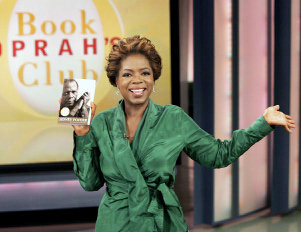Martin Luther King Jr.’s birthday has just passed and February is Black History Month in the US. Only a small fraction of books feature people of color, but to stroll through the aisles of a bookstore during the other 11 months of the year, it is easy to think there are none at all.
The publishing industry fuels this to some extent as there are all too frequent rows over bookcovers where the protagonist is depicted as white when they’re clearly described in the book as not-white. Now, some of this may the fault of the art department. Covers are often commissioned well in advance and the illustrator may not have been told the protagonist was not white, but that points to another flaw. It is automatically assumed the character MUST be white. You never have a brown face on the cover when the protagonist is white.
With a reprint of an established book you have all the time in the world to get it right. If you don’t, there are two likely reasons. Publishers assume people won’t buy a book with a brown face on it. Imagine for a moment, if a new edition of Harry Potter showed Harry without his glasses, because the wisdom was the people that don’t wear glasses will not buy a book with someone wearing glasses on the cover.
The other option is that the publisher does not think it MATTERS. If it is going to a reprint, clearly something about the characters resonated with buyers. They loved that character. Ignoring that trait denies that a character with brown skin CAN be loved.
“A Wizard of Earthsea” by Ursula Le Guin has been all over the place in depiction of the main character. For reference, he’s got reddish-brown skin. His best friend is black. The majority of the characters are brown, reddish-brown, or black. Whites are the minority.
1st edition (1968)- This is absolutely spot on and a very striking design. (Parnassus)

Paperback (1971)- I’m not sure the character here could GET whiter. This is 3 years after the book first appeared… there’s no reason this should be an “oops!”. (Puffin)

Box set (1975) – A similar design was used on the paperbacks for much of the 70s. Note Ged is back to correct skin tone. (Bantam)

The late 70s and early 80s seemed to have decided to skip the entire issue and mostly have just buildings.
Hardcover (1991)- Who is this white guy? (Atheneum Books)

Paperback (1991)- I couldn’t find a higher resolution image of this one, but it looks like the skin tone is correct here. (Roc)

Puffin, AGAIN, (1994)- Look, Puffin, its been 25 years. You need to have a word with the art department…

Hardcover (2005)- This is an omnibus edition that contains all 3 books. (Scifi bookclub)

Paperback (2009)- This is the way to avoid all controversy over skin color, have the main character face AWAY from everyone. (Bantam)

There are many more covers that fall somewhere in this sequence but I couldn’t pin down an exact date for them. There were also a lot of covers that sidestepped the whole issue by having the main character face away (as in the last image) or had pictures of buildings on them instead.
Le Guin has commented in various articles (including here) that while she has no control over the cover, when she asks for an explanation of why the cover art is wrong, she gets a vague explanation that having people of color on the cover hurts sales.
Le Guin is hardly unique in the issue of having the color of her protagonist changed. Wizard of Earthsea has just had so many editions, there’s many available examples of doing it right, doing it wrong, and just plain running away from the issue entirely.
But back to this idea that seeing a brown face on a book cover hurts sales. This is patently ridiculous. Think of a person that can immediately turn a book into a bestseller merely by holding it, saying its name, or appearing on the cover.

Nothing spells book sales quite like O-P-R-A-H. Perhaps she is the exception that proves the rule… or she may be the publishing juggernaut that finally destroys that belief.
But what does this have to do with YOUR store?
Most indie bookstores pitch themselves as a community bookstore. But except for those brief periods where there’s a specific event like Black History Month, the faces peering back from the prime display space often don’t reflect the actual diversity in the community around them. Publishers don’t offer a lot of covers with people of color on them because of that belief that “people of color don’t sell books”. Since there’s so few available, it becoming a self fulfilling prophecy. They’re so scare they’re rarely highlighted, so it just reinforces the old canard.
That will not change until sales data utterly destroys that belief and grinds it into the dust of history. Oprah can’t do it all by herself! So look at the books you’ve chosen to display faceout as featured items and look at the faces on them. Are these the faces of your community? Are the faces looking back at you the faces you see on the street or buying milk at the local grocery store? Look at those faces on the covers looking back at you and you may quickly realize that its not simply African Americans who are missing, but a great many groups. Where are the Hispanics? Where are the Asians? Where are the senior citizens? When was the last time you saw a picture on a book cover showing anyone with any type of disability, even in the background of the cover image? Where are the people I wave “hi” to everyday?
This is not to say if you have some other unifying theme going that you should shoehorn in a book that’s off topic just for the sake of diversity. If you’ve got a display on botany out you don’t automatically have to include a book on an unrelated topic just because the faces on the covers aren’t diverse enough. You have a whole store to do that in.
If you are ordering new titles and you’re torn as to which book to order, or torn which in-stock book to include in a display, use that as a tiebreaker. Pick the book that will best help your store reflect the community that supports it. Displaying those books and giving them the chance to sell proves they DO sell.
It is a very small thing. It doesn’t end discrimination. But it does send the message, however subtle, that your store is part of the community. People see themselves in the faces on display there, see their neighbors’ faces, see their community looking back at them and know they belong here. And so do you.

I originally used astronomy as my example of building a themed display, but two of the most familiar faces in astronomy today are the exception that prove the rule about minority groups.
Neil deGrasse Tyson (who’s black) is very familiar to Americans since he’s a frequent guest on many television shows. He’s the head of the Hayden planetarium, so many national shows call him in to explain astronomy since he’s their expert next door. He also hosts Nova ScienceNow, which airs on most PBS station in the US.
Steven Hawking is one of the few cases where you’ll see someone in a wheelchair on a bookcover. He’s probably the most easily recognized scientist worldwide because of that. Even people not that interested in science have a good chance of being able to identify Steven Hawking.
Hey,
Do you know ho the artist of the cover of the books is?
I wrealy want to know.
Greets: Carte Blanche from: Gistel,Belgium
Sorry for my english 🙂
Hi Carte Blance, Most likely it was a different artist for each picture because the publishing dates go from 1968 to 2009. If there was one in particular you cared about you might do a “Image Search” and find out that way but it would be a tedious process.
Good article Nora and some food for thought. But I would mention that a small town bookstore that has people of a single ethnicity should not worry about what color the faces on the covers are and to display the books that are sellers.
Don’t forget also that the sunshine through a window can destroy a cover’s color and they must be switched out frequently or sold at a reduced price.
Race is most obvious, but if you discount the nonfiction books that are “dealing with the problems of being X”, it’s rare to see people from any group that doesn’t fit the standard mold of book cover models. It’s rare to see anyone that’s disabled, elderly, overweight, and not clearly from the middle of upper class. Even if you’re in a town that only one race, those OTHER groups in the community are just as often neglected.
Often the cover art is not attributed as its done as “work for hire” so belongs to the publisher.
The INTERIORS were done Ruth Robbins, but the exterior illustrations generally didn’t have an artist attribution attached.
crosslink to another BSB article… Handling Offensive Titles Without Causing Offense: